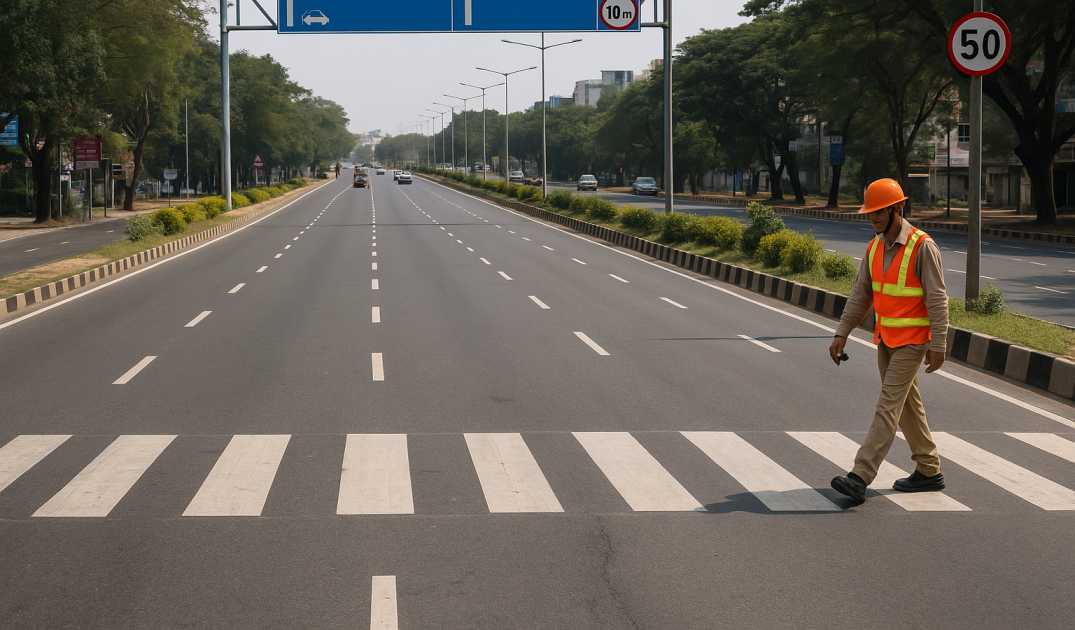Contact Us
RoadVision AI
Private Limited
Office No. 308 & 310, B Block
Ansal Chamber - 1, Bhikaji Cama Place,
Near Engineers India Limited (EIL) Bhawan, New Delhi - 110066
© 2024 | RoadVision AI | All rights reserved
As India's cities expand and urban mobility accelerates, ensuring road safety is more critical than ever. The Indian Roads Congress (IRC) introduced IRC SP:102 to standardize road safety audits for urban roads, laying out comprehensive requirements for design review, defect detection, signage, pavement condition, and more.
But traditional audits — manual and time-consuming — are no longer scalable. Enter AI-based road asset management, which leverages video, sensors, and computer vision to automate inspection, generate real-time insights, and ensure compliance.
In this article, we will explain:

IRC SP:102 is a code of practice that defines design guidelines and audit procedures for urban roads in India. It covers safety elements from:
The objective is to reduce crash risk by ensuring that all urban roads meet uniform safety and design standards. These guidelines are crucial for municipal corporations, PWDs, urban development agencies, and DPR consultants.
Traditionally, road audits involve:
This process is:
Platforms like RoadVision AI use computer vision, smartphone cameras, and GIS mapping to automate the entire audit workflow.
Let’s explore how AI helps in each step of IRC SP:102-based audits.
Using high-resolution camera feeds, RoadVision AI identifies:
These defects are mapped to the corresponding IRC severity scale, helping authorities prioritize repair.
Explore more: Pavement Condition Survey
RoadVision AI overlays camera data with automated safety compliance scoring:
Explore more: Road Safety Audit
IRC SP:102 emphasizes inventory audits, including:
AI auto-detects their presence, condition, and GPS location.
Explore more: Road Inventory Inspection
IRC SP:102 also includes requirements related to:
RoadVision AI analyzes traffic video feeds to assess risky behaviors and simulate pedestrian-vehicle conflict zones.
Explore more: Traffic Survey
SP:102 aligns with IRC 82 on rating roads based on:
RoadVision provides automated condition scores and heatmaps, making it easier to identify critical zones.
See real results: Case Studies
- Audits conducted in record time
- Objective, repeatable measurements
- Digital reports ready for submission to authorities
- Cost-effective for ULBs and consultants
- Real-time maps and risk scores
With RoadVision AI, you can go from road inspection to compliance report in hours—not weeks.
IRC SP:102 is India’s safety backbone for urban road audits. But complying with it manually is no longer practical, especially for rapidly growing cities.
By adopting AI-based road asset management tools like RoadVision AI, governments, consultants, and urban planners can:
It is revolutionizing road infrastructure development and maintenance by leveraging cutting-edge AI in road safety and computer vision technology. Through advanced digital twin technology, the platform performs comprehensive road safety audits, enabling early detection of potholes, cracks, and other surface issues, ensuring timely repairs and improved road conditions. It also enhances traffic surveys by providing data-driven insights to address challenges like traffic congestion and optimize road usage. With a focus on building smart roads, RoadVision AI ensures full compliance with IRC Codes, empowering engineers and stakeholders to reduce costs, minimize risks, and improve the overall road safety and transportation experience.
Ready to upgrade your audits? Book a demo today
Q1. What is IRC SP:102 used for?
It provides guidelines for road safety audits on Indian urban roads, focusing on intersections, geometry, signage, and pavement condition.
Q2. Can AI fully automate IRC SP:102 audits?
Yes. Tools like RoadVision AI automate defect detection, scoring, and reporting aligned with IRC formats.
Q3. Who needs IRC SP:102 compliance?
All urban road-owning bodies such as municipal corporations, PWDs, and smart city missions.